|
|
Two-dimensional Transition Metal Dichalcogenides for Electrocatalytic Oxygen Reduction Reaction
SUN Lian, GU Quanchao, YANG Yaping, WANG Honglei, YU Jinshan, ZHOU Xingui
2022 Vol. 37 (7): 697–709
 Abstract
Abstract(
901 )
 HTML
HTML(
58)
 PDF
PDF(15655KB)(
1030
)
Oxygen reduction reaction (ORR) is the key reaction in cathode for fuel cells. Because of the sluggish kinetics, platinum (Pt) is widely used as the electrocatalysts for ORR. However, the high cost of Pt and poor stability of carbon black support under high voltage limit the commercialization and durability of fuel cells. Two-dimensional transition metal dichalcogenides (2D TMDs) possess large specific area, tunable electronic structure, and high chemical stability, making them a good candidate for ORR catalysts with high activity and durability. This paper reviews the recent progress of 2D TMDs-based ORR electrocatalysts. First, crystal structure, electronic properties, and ORR reaction mechanism are briefly introduced. Then some strategies for adjusting ORR performance of 2D TMDs are summarized, including heteroatom doping, phase conversion, defect engineering, and strain engineering. Meanwhile, the ORR activity enhancement arising from 2D TMDs-based heterostructures is also analyzed. Finally, perspectives are given for current issues and their possible solutions.
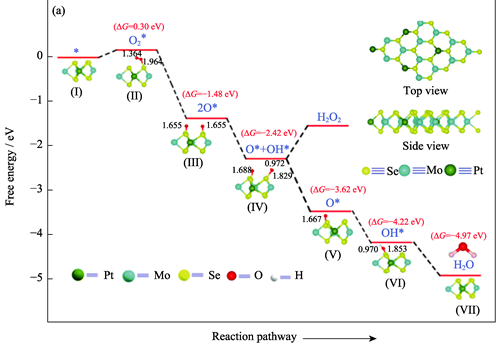
|
|
|
Effect of Dual-functional Electrolyte Additive on High Temperature and High Voltage Performance of Li-ion Battery
JIANG Yiyi, SHEN Min, SONG Banxia, LI Nan, DING Xianghuan, GUO Leyi, MA Guoqiang
2022 Vol. 37 (7): 710–716
 Abstract
Abstract(
908 )
 HTML
HTML(
56)
 PDF
PDF(6574KB)(
945
)
Development and application of power lithium-ion batteries are strictly restricted by their high temperature and high voltage performance, such as capacity degradation and gas swelling, which are related to not only the modified electrode material and battery design but also the electrolyte. Herein, tetravinylsilane (TVS) was applied as electrolyte additive to improve storage and cycling performances of LiNi0.6Co0.2Mn0.2O2 (NCM622)/graphite pouch cell at high cutoff voltage (4.4 V) and high temperature (45-60 ℃). The capacity retention rate of the cell after 400 cycles (2.8-4.4 V) at 1C (1C=1.1 Ah) with mass fraction 0.5% TVS in the electrolyte is as high as 92%, compared with 82% for its counterpart without TVS. On the one hand, TVS is preferentially oxidized under high voltage, contributing to the formation of a high-temperature resistant CEI (cathode electrolyte interphase) film on the surface of NCM622 particles, which effectively inhibits generation of internal cracks in NCM622 particles and dissolution of transition metal ions. On the other hand, TVS can also be preferentially reduced and polymerized, thus forming a stable SEI film on the surface of graphite anode, which inhibits the side reaction between the electrolyte and the negative electrode.
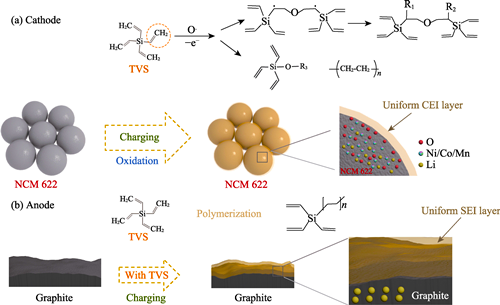
|
|
|
Inhibition of Lattice Thermal Conductivity of ZrNiSn-based Half-Heusler Thermoelectric Materials by Entropy Adjustment
WANG Pengjiang, KANG Huijun, YANG Xiong, LIU Ying, CHENG Cheng, WANG Tongmin
2022 Vol. 37 (7): 717–723
 Abstract
Abstract(
440 )
 HTML
HTML(
25)
 PDF
PDF(2788KB)(
859
)
The thermoelectric properties of ZrNiSn-based half-Heusler materials were hindered due to their high thermal conductivity. In order to reduce the lattice thermal conductivity, the high-entropy alloys ZrNiSn and Zr0.5Hf0.5Ni1-xPtxSn (x=0, 0.1, 0.15, 0.2, 0.25, 0.3) were prepared by levitation melting and spark plasma sintering. Configurational entropy of the alloys was manipulated by Hf substitution for Zr and Pt substitution for Ni. Effects of configuration entropy on the thermoelectric properties were investigated. The reslults showed that the minimum sum of lattice thermal conductivity and bipolar thermal conductivity (κl+κb) at 673 K for Zr0.5Hf0.5Ni0.85Pt0.15Sn was optimized at 2.1 W·m-1·K-1, which was significantly reduced by about 58% when compared with ZrNiSn. This finding provides an effective strategy for reducing lattice thermal conductivity of ZrNiSn-based alloy to offer great potential for further improvement of thermoelectrics.
|
|
|
Thermoelectric Property of In2O3/InNbO4 Composites
CHENG Cheng, LI Jianbo, TIAN Zhen, WANG Pengjiang, KANG Huijun, WANG Tongmin
2022 Vol. 37 (7): 724–730
 Abstract
Abstract(
350 )
 HTML
HTML(
18)
 PDF
PDF(1449KB)(
704
)
As being a good photoelectric and gas sensitive material, In2O3 is of great interest to the thermoelectric community due to its excellent thermoelectric properties at high temperature. In this study, the second phase InNbO4 was successfully induced into the In2O3 matrix in situ by solid-state reaction combined with spark plasma sintering (SPS) to optimize the preparation process of bulk samples. It is found that introducing InNbO4 distinctly affects the electrical transport properties of the In2O3/InNbO4 composite samples, and its carrier concentration is dramatically increased. The highest electrical conductivity is 1548 S·cm-1 at 1023 K, which is higher than those of most element-doped samples. The power factor of 0.67 mW·m-1·K-2 and the highest ZT value of 0.187 are achieved for the 0.998In2O3/0.002InNbO4 sample at 1023 K. In conclusion, the electrical properties of In2O3 ceramics can be effectively improved by introducing in-situ InNbO4 second phase, and thus the thermoelectric property at high temperatures is further regulated.
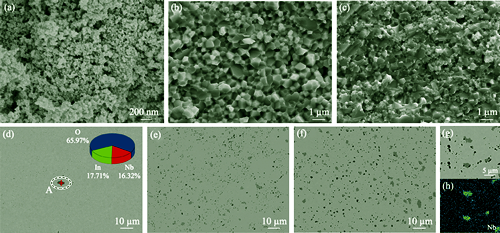
|
|
|
Preparation and Properties of Ag@C3N4 Photocatalyst Supported by Hydrogel
WANG Xiaojun, XU Wen, LIU Runlu, PAN Hui, ZHU Shenmin
2022 Vol. 37 (7): 731–740
 Abstract
Abstract(
580 )
 HTML
HTML(
37)
 PDF
PDF(2308KB)(
826
)
Graphitic carbon nitride (g-C3N4) is widely used in the field of photocatalysis due to its unique two-dimensional planar structure and suitable energy band structure. However, it has some disadvantages such as fast recombination of the electron-hole, low visible-light utilization efficiency and poor dispersion in water, which hinder its application. In this study, the hydrogel prepared by sodium alginate was used as matrix to improve the dispersion of Ag@C3N4 composite in water, and at the same time enhanced the separation efficiency of photoelectron-holes pairs, thus improving its photocatalytic performance. Firstly, g-C3N4 was synthesized by thermal polymerization and then exfoliated into nanosheets by ultrasound. Then, Ag nanoparticles were deposited in situ on the surface of g-C3N4 by solution method to prepare Ag@C3N4. Finally, hydrogel loaded with Ag@C3N4 (SA/Ag@C3N4) was obtained by using calcium ion as crosslinker and sodium alginate (SA) as precursor. The morphology, microstructure and phase composition of the as-prepared photocatalyst were characterized. The as-prepared SA/Ag@C3N4 exhibited a 1.5 times higher photocatalytic degradation rate of methyl orange than that of Ag@C3N4. The catalytic mechanism was investigated by photoluminescence spectrum, time resolved photoluminescence spectrum and electron paramagnetic resonance spectrum. The results showed that the surface plasmon resonance effect of silver nanoparticles together with the porous structure and mass transfer channel of sodium alginate hydrogel plays a synergistic role in the enhancement of photocatalytic performance.

|
|
|
CoNx/g-C3N4 Nanomaterials Preparation by MOFs Self-sacrificing Template Method for Efficient Photocatalytic Reduction of U(VI)
HONG Jiahui, MA Ran, WU Yunchao, WEN Tao, AI Yuejie
2022 Vol. 37 (7): 741–749
 Abstract
Abstract(
517 )
 HTML
HTML(
18)
 PDF
PDF(2042KB)(
864
)
Broad application of nuclear energy has resulted in the release of radionuclides such as uranium [U(VI)], into the environment, and its potential toxic and irreversible effects on the environment are among the paramount issues in nuclear energy use. Graphite carbon nitride (g-C3N4) is a kind of non-metallic material with the triazine structure. In recent years, the reduction of U(VI) to insoluble U(IV) by g-C3N4 photocatalysis has become a major research focus on the area of radioactive pollutants. In this work, a metal-organic framework (MOF) material containing cobalt metal was used as a self-sacrificial template. Through simple thermal copolymerization, the Co-Nx coordination was successfully incorporated into g-C3N4 to synthesize the CoNx/g-C3N4 photocatalyst. The effects of the morphology, structure, and photoelectric properties of CoNx/g-C3N4 on the photocatalytic reduction of U(VI) were investigated using macroscopic batch experiments. The results showed that the introduction of Co effectively broadened the absorption range of g-C3N4 to visible light, inhibited recombination of the photogenerated electrons and holes, and facilitated the reduction of U(VI). Under irradiation in visible light for 45 min, pH 5.0 and solid-liquid ratio of 1.0 g/L, the photocatalytic reduction of a standard 50 mg/L U(VI) solution reached 100% by CoNx/g-C3N4(w(Co-MOFs) : w(g-C3N4)=1 : 1). Furthermore, the photocatalytic mechanism of CoNx/g-C3N4 was investigated through capture experiments. In summary, the CoNx/g-C3N4 composite exhibits excellent optical performance, has simple operation, is eco-friendly, and has a significant photocatalytic effect on U(VI) in radioactive wastewater. This work also provides design strategy and technical reference for applying g-C3N4 materials to treat radioactive wastewater.
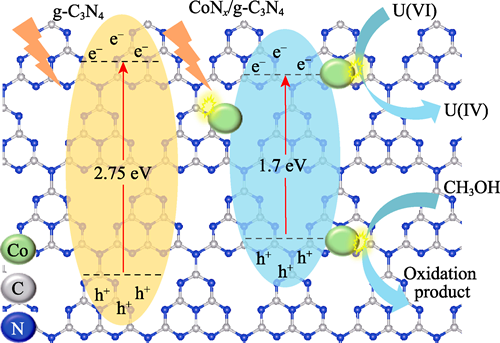
|
|
|
Preparation of SiO2@Ag@SiO2@TiO2 Core-shell Structure and Its Photocatalytic Degradation Property
CHI Congcong, QU Panpan, REN Chaonan, XU Xin, BAI Feifei, ZHANG Danjie
2022 Vol. 37 (7): 750–756
 Abstract
Abstract(
477 )
 HTML
HTML(
19)
 PDF
PDF(5162KB)(
1044
)
Photocatalytic degradation is an eco-friendly and high-efficiency way to degrade dye pollutants which has broad application prospects in water pollution control. In this study, the multi-layer core-shell structure of SiO2@Ag@SiO2@TiO2 was synthesized by different methods as a photocatalyst for pollutant degradation, with oxidation-reduction method, modified Stöber method and hydrothermal method in turn. Effect of silver nitrate (AgNO3), tetraethyl orthosilicate (TEOS) and tetrabutyl titanate (TBOT) on the coating effect were discussed. Microstructure, phase structure, pore structure parameters and photoelectrical properties of SiO2-based multi-layer core-shell structure were systematically analyzed by various characterization methods while its degradation performance of methylene blue (MB) was also studied and discussed. The results show that when the mass ratio of AgNO3, TEOS and TBOT to SiO2 is 5 : 2.4 : 6 : 1, each layer of the multi-layer cored shell structure achieves the optimal coating effect. Compared with SiO2@TiO2 and SiO2@Ag@TiO2, the core-shell structure of SiO2@Ag@SiO2@TiO2 photocatalyst has the best photocatalytic activity. Its photocatalytic degradation efficiency is close to 93% after simulated visible light irradiation for 45 min, and degradation efficiency keeps at 90% after 4 cycles of recycling tests.
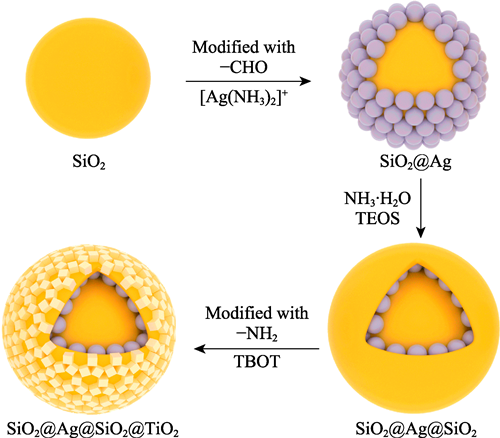
|
|
|
Immobilizing Behavior of Trivalent Actinide Nuclides by YIG Ceramics
LUO Shilin, ZHANG Shengtai, XU Baoliang, WANG Lingkun, DUAN Siyihan, DING Yi, ZHAO Qian, DUAN Tao
2022 Vol. 37 (7): 757–763
 Abstract
Abstract(
374 )
 HTML
HTML(
14)
 PDF
PDF(1951KB)(
601
)
Garnet is considered as a potential matrix for immobilizing high-level radioactive waste (HLW) because of its large actinide package capacity and chemical flexibility. Y3-xNdxFe5O12 (0≤x≤2) series yttrium iron garnet (YIG) samples was successfully synthesized by solid-state sintering method using Nd3+ to simulate trivalent actinides. The solubility limit of Nd in the YIG and the influence of Nd doping amount on the phase and microstructure of ceramics was studied. Then the chemical durability of Nd-doped yttrium iron garnet solidified body under different pH conditions was evaluated. The results show that the ceramics with x≤1.7 show homogeneous single YIG, but the ceramics with x≥1.8 exhibit coexistence of three crystal phases (YIG, NdFeO3 and Fe2O3). The solubility limit of Nd3+ in the pure YIG is about 29.5% (in mass). As the amount of Nd doping increases, the density of the ceramics increases, the volume decreases, and the porosity decreases. The leaching experiment results show that the normalized leaching rate of the elements (LRi) is 10-6~10-5g·m-2·d-1. LRY is smaller than LRNd, and the normalized leaching rate of the elements in acid leachate is slightly higher than those in neutral and alkaline leachates. The results indicate that YIG ceramics are a potential candidate form for trivalent actinides.
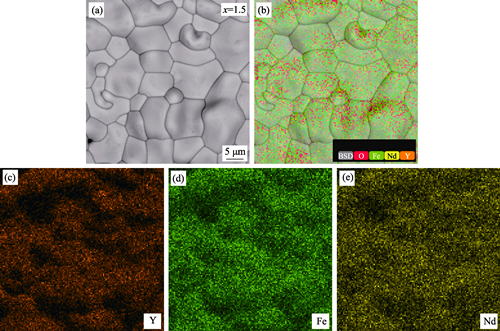
|
|
|
Composition, Structure and Properties of CrAlN-DLC Hard Composite Films Deposited by Arc Ion Plating
CHENG Weijie, WANG Minglei, LIN Guoqiang
2022 Vol. 37 (7): 764–772
 Abstract
Abstract(
321 )
 HTML
HTML(
10)
 PDF
PDF(9735KB)(
708
)
To improve the friction performance of CrAlN film, CrAlN-DLC hard composite films with different compositions were prepared on the cemented carbide substrates using separation target arc current control technology of the enhanced magnetic filter pulsed bias arc ion plating equipment, and their surface morphology, composition, phase structure, mechanical, and friction properties were investigated. The results revealed that the surfaces of different films were flat and dense, and the film thicknesses were all about 1.05 μm. With the increase of target arc current ratio (IC/ICrAl), the carbon atomic content of the film increased from 33.1% to 74.6%. Phase structure of the film was mainly composed of crystal phase and amorphous phase. With the increase of carbon content, the crystal phase of c-(Cr,Al)N decreased and the crystal grain size reduced, besides, the ratio of sp2/sp3 in DLC amorphous phase decreased. Correspondingly, the hardness of the film increased with the increase of carbon content. When the carbon atomic content is 74.6%, the hardness reaches the maximum of (26.2±1.4) GPa, which results in the friction coefficient at this point attaining the minimum value of 0.107, and the wear rate is only 3.3×10-9 mm3/Nm. In summary, the comprehensive performance of the CrAlN-DLC composite film reaches the best when the content of amorphous DLC phase get the maxium, and the friction performance is significantly improved as compared to the CrAlN film.

|
|
|
Microstructure and Properties of Bi-doped Yttrium Iron Garnet Magneto-optical Ceramics Prepared by Hot-pressing Sintering Process
ZOU Shun, HE Xiyun, ZENG Xia, QIU Pingsun, LING Liang, SUN Dazhi
2022 Vol. 37 (7): 773–779
 Abstract
Abstract(
594 )
 HTML
HTML(
17)
 PDF
PDF(3248KB)(
720
)
Yttrium iron garnet (Y3Fe5O12, YIG) materials with excellent magnetic and magneto-optical performances have been widely used in various fields such as the microwave communication, laser technology and optical fiber communication. Ion doping is considered as an effective method to improve the magneto-optical performance of YIG materials. In this study, Bi3+ with appropriate ion radius were selected to modify YIG ceramics to improve the magneto-optical properties of the materials. A series of BixY3-xFe5O12 (x=0, 0.3, 0.6, 0.9) ceramics were prepared by the hot-pressing sintering process with the solid-state reaction. Phase structure, micro-morphology, infrared transmittance, magnetic and magneto-optical properties of the sintered BixY3-xFe5O12 (x=0, 0.3, 0.6, 0.9) ceramics were investigated. All sintered Bi3+-doped YIG ceramic samples exhibit the pure garnet phase structure with dense microstructure, and the grain size increases with Bi3+ doping. The infrared transmittance of the sample is good, but it decreases with the increase of Bi3+ doping content. The Faraday rotation angle of the YIG ceramic sample changes linearly with the Bi3+ content increase. When the Bi3+ content increases about 1% (in atom), Faraday rotation angle changes about -49.0 (°)/cm and -30.2 (°)/cm at 1064 nm and 1550 nm wavelengths, respectively. Faraday rotation angles of Bi0.6Y2.4Fe5O12 ceramic sample at wavelengths of 1064 nm and 1550 nm are -703.3 (°)/cm and -461.5 (°)/cm, respectively, which are much higher than that of the undoped YIG ceramics (277.6 (°)/cm and 172.0 (°)/cm, respectively). The magneto-optical performance of YIG ceramics is enhanced obviously by the Bi3+ doping.
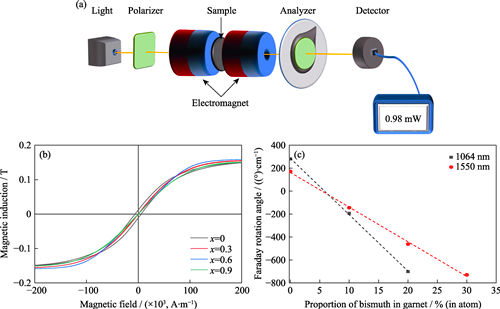
|
|
|
Drug Carrier Based on Mesoporous Borosilicate Glass Microspheres: Preparation and Performance
PANG Libin, WANG Deping
2022 Vol. 37 (7): 780–786
 Abstract
Abstract(
420 )
 HTML
HTML(
21)
 PDF
PDF(1220KB)(
659
)
Mesoporous silica particles have characteristics of excellent chemical stability, large specific surface area and convenient surface modification, showing promising application in drug carriers. However, their lack of bioactivity and slow biodegradation rate limit this application. To overcome these shortcomings, creating suitable biomaterials for drug carriers has become an indispensable and, therefore, important research direction in materials science. Compared with pure silica or silicate glasses, borosilicate glasses with excellent bioactivity degrade faster, enabling them suitable and favorable for drug carriers. Here, we synthesized mesoporous borosilicate glass microspheres (MBGMs) and characterized their properties of loading and releasing an antitumor drug, doxorubicin hydrochloride (DOX), and releasing their own various ions triggered by degradation. The results showed that BMGMs had a DOX loading amount of about 25 mg/g. Introduction of boron improved chemical activity and degrading rate of MBGMs, resulting in more DOX released in acidic enviroment than alkaline condition, which displayed a certain acid-responsive drug releasing behavior. Meanwhile, MBGMs can release functional ions such as SiO44-, BO33- and Ca2+, and induce hydroxyapatite formation, indicating sustained ion releasing ability and excellent bioactivity. Altogether, MBGMs, as a novel kind of drug carrier, have a potential application in the field of pathological bone defect repairing.
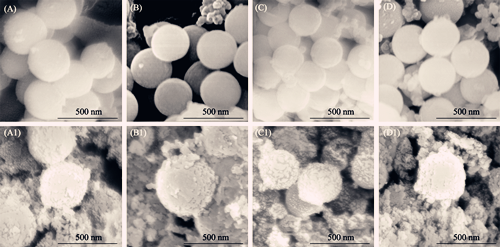
|
|
|
Pressure on the Structure and Thermal Properties of PbTiO3: First-principle Study
WEN Zhiqin, HUANG Binrong, LU Taoyi, ZOU Zhengguang
2022 Vol. 37 (7): 787–794
 Abstract
Abstract(
371 )
 HTML
HTML(
12)
 PDF
PDF(1906KB)(
667
)
PbTiO3 (PTO) is an important ferroelectric functional material, but its structure, stability, mechanical property, and thermodynamic property under pressure is still unknown, leading to restriction in applying in the field of electronic communication. Here, first-principles calculations based on density functional theory was performed to study the structure and thermal properties of pre-perovskite phase PbTiO3 (PP-PTO), ferroelectric tetragonal phase PbTiO3 (TP-PTO), and paraelectric cubic phase PbTiO3 (CP-PTO) under pressure. It is found that their compressibility in descending order is PP-PTO>TP-PTO>CP-PTO. Under considered pressure, three PTO phases have not undergone a phase transition analyzed by band structure and density of states, and their band gap gradually decreases with increasing pressure. Among them, the TP-PTO changes from an indirect to a direct band gap semiconductor at 20 GPa, while the others remain a direct band gap semiconductor. Those PTO phases are mechanically stable and anisotropy from 0 to 30 GPa. Furthermore, their comprehensive mechanical properties increase and anisotropy firstly decreases and then increases with increasing pressure. Analysis based on quasi- harmonic Debye approximation theory was performed to study the influence of temperature and pressure on Debye temperature, entropy and heat capacity. The results illuminate that Debye temperature decreases with temperature increase, nevertheless, pressure has the opposite effect, which elucidates that the order of covalent bond from strong to weak is CP-PTO>TP-PTO>PP-PTO. Entropy and heat capacity of PTO increase with rising temperature, but decrease with the increase of pressure.
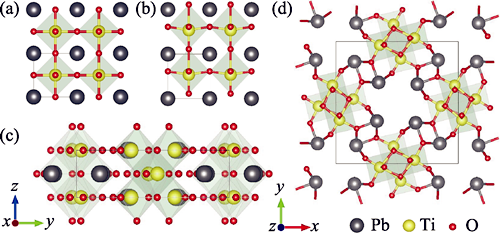
|
|
|
High-uniformity Memristor Arrays Based on Two-dimensional MoTe2 for Neuromorphic Computing
HE Huikai, YANG Rui, XIA Jian, WANG Tingze, DONG Dequan, MIAO Xiangshui
2022 Vol. 37 (7): 795–801
 Abstract
Abstract(
784 )
 HTML
HTML(
25)
 PDF
PDF(3081KB)(
963
)
Two-dimensional transition metal dichalcogenides are appealing materials for the preparation of nanoelectronic devices, and the development of memristors for information storage and neuromorphic computing using such materials is of particular interest. However, memristor arrays based on two-dimensional transition metal dichalcogenides are rarely reported due to low yield and high device-to-device variability. Herein, the 2D MoTe2 film was prepared by the chemical vapor deposition method. Then the memristive devices based on 2D MoTe2 film were fabricated through the polymethyl methacrylate transfer method and the lift-off process. The as-prepared MoTe2 devices perform stable bipolar resistive switching, including superior retention characteristics (>500 s), fast switching (~60 ns for SET and ~280 ns for RESET), and excellent endurance (>2000 cycles). More importantly, the MoTe2 devices exhibit high yield (96%), low cycle-to-cycle variability (6.6% for SET and 5.2% for RESET), and low device-to-device variability (19.9% for SET and 15.6% for RESET). In addition, a 3×3 memristor array with 1R scheme is successfully demonstrated based on 2D MoTe2 film. And, high recognition accuracy (91.3%) is realized by simulation in the artificial neural network with the MoTe2 devices working as synapses. It is found that the formation/rupture of metallic filaments is the dominating switching mechanism based on the investigations of the electron transport characteristics of high and low resistance states in the present MoTe2 devices. This work demonstrates that large-scale two-dimensional transition metal dichalcogenides film is of great potential for future applications in neuromorphic computing.
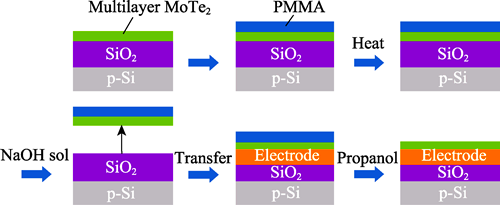
|
|
|
Mechanism Study on Garnet-type Li6.4La3Zr1.4Ta0.6O12 Regulating the Solid Electrolyte Interphases of Si/C Anodes
SU Dongliang, CUI Jin, ZHAI Pengbo, GUO Xiangxin
2022 Vol. 37 (7): 802–808
 Abstract
Abstract(
400 )
 HTML
HTML(
23)
 PDF
PDF(8255KB)(
748
)
The large volume change of silicon anode leads to rupture of the solid electrolyte interface (SEI) and the pulverization of Si electrode during charge-discharge process, which results in uncontrolled capacity loss. In this work, a strategy to regulate the SEI composition of Si/C anodes utilizing Li6.4La3Zr1.4Ta0.6O12 (LLZTO) solid electrolyte was proposed. LLZTO layer is uniformly coated on the surface of polypropylene (PP) separator, which not only improves wettability of the electrolyte to the separator, thereby homogenizing the lithium-ion flux, but also increases the proportion of inorganic components in SEI and enhances the interfacial stability of Si/C anodes. As a result, Li batteries using the LLZTO coated PP separator exhibit better cycling stability and rate capability. Li-Si/C half cell exhibits a reversible capacity of 876 mAh·g-1 with 81% capacity retention for more than 200 cycles at 0.3C (1C= 1.5 A·g-1), and Si/C-LiFePO4 (LFP) full cell delivers a capacity of 125 mAh·g-1 with 91.8% capacity retention after 100 cycles at 0.3C (1C=170 mA·g-1). This work reveals the mechanism of LLZTO solid electrolytes in regulating the SEI of Si/C anodes and sparks new ideas for developing high-performance silicon-based lithium batteries.
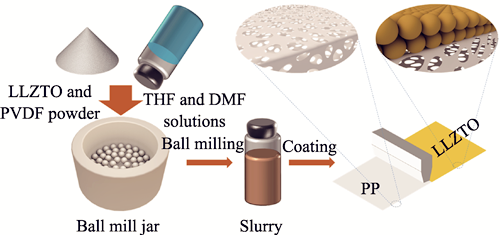
|
|